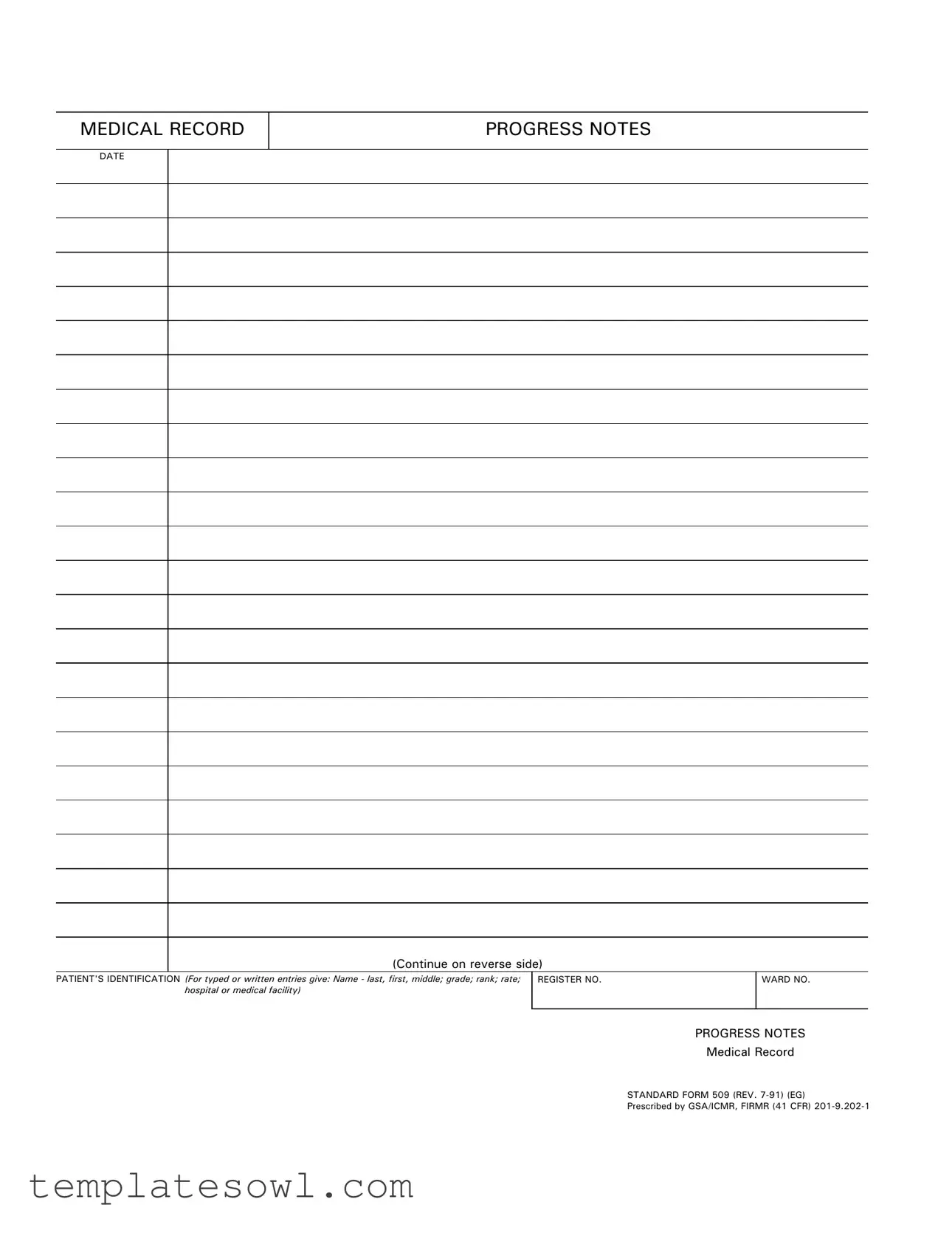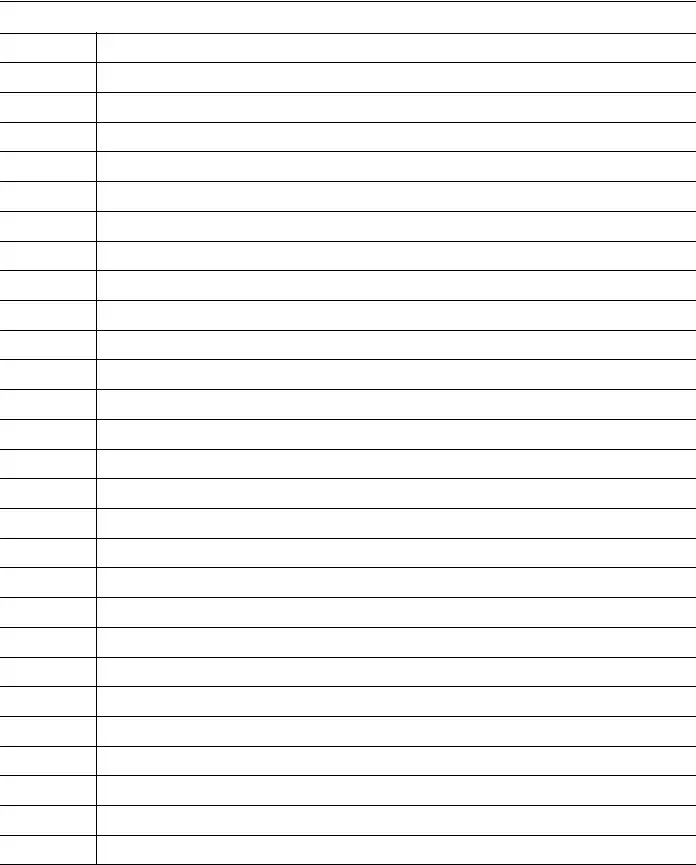What is the purpose of the Progress Notes form?
The Progress Notes form serves as a standardized method for documenting a patient's medical history, ongoing treatment, and any significant changes in their condition. Health care providers use this form to maintain accurate records, ensuring that all team members are informed about the patient's status and care plan. It also helps facilitate continuity of care throughout the treatment process.
What information is required on the Progress Notes form?
You need to provide the patient's identification details, including their name (last, first, middle), grade, rank, rate, and the name of the medical facility or hospital. Additionally, the date of the entry is crucial, along with specific notes detailing observations, assessments, and any actions taken regarding the patient's care. This information is vital for tracking the patient's progress over time.
How do I fill out the Progress Notes form correctly?
When completing the Progress Notes form, ensure that all fields are filled out clearly and accurately. Begin with the date and the patient's identification details. When entering notes, be concise yet descriptive, including relevant observations and changes in the patient's condition. Use standardized abbreviations where appropriate, and maintain a chronological order to reflect the timeline of treatment. Review your notes for clarity before finalizing the entry.
What should I do if I make an error on the Progress Notes form?
If you notice a mistake after your notes have been recorded, do not attempt to erase or obliterate the error. Instead, strike through the incorrect entry with a single line and initial it. Then, provide the correct information nearby or in a new entry. This ensures that the record remains clear and trustworthy, which is crucial for ongoing patient care and legal compliance.
Is there a specific format or standard for writing Progress Notes?
While the Progress Notes form itself provides a structure, entries should follow a consistent and logical format. It’s often recommended to use the SOAP method (Subjective, Objective, Assessment, Plan) or similar frameworks to enhance clarity. This standardization helps others understand the notes quickly. Adopting a structured approach allows for efficient communication among healthcare providers and ultimately aids in delivering high-quality care to the patient.


